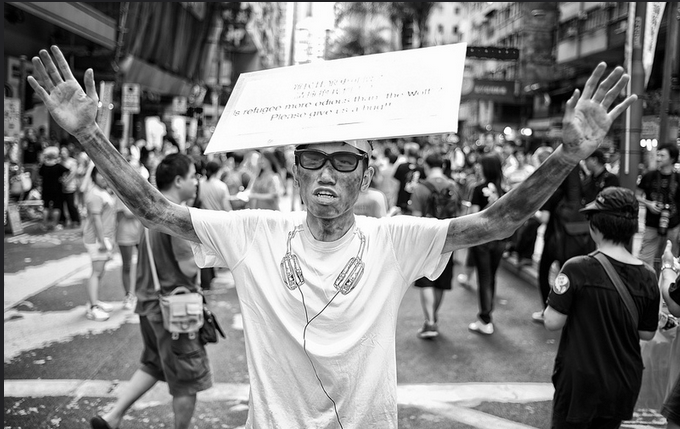Far from the more dramatic headlines of the summer, pro-democracy protests have rocked Hong Kong. Unlike in mainland China, there is a strong protest culture in Hong Kong but these protests – and the underlying issues that belie them – may mark an indelible turning point for the special relationship Hong Kong shares with Beijing, with neither side willing to back down or compromise with the other.
When the British handed over control of the former colony to China in 1997, there were plenty of questions about how the capitalist and democratic city would fit within communist China. The notion of “one country, two systems” and the city’s status as the country’s first Special Administrative Region gave hope that Hong Kong could continue to function unimpeded by the political limitations often found in mainland China. In the years since, while Hong Kong does enjoy more freedom than the mainland, it also increasingly faces political pressures from the central government. Like pro-democracy activists in mainland China, those in Hong Kong have faced crackdowns in recent years as Beijing is willing to give the locals a leash, but not one long enough to stray from the central tenants of the communist government.
Frustration with these limitations is the reason behind Occupy Central with Love and Peace (OCLP), a pro-democracy protest movement advocating for universal suffrage in Hong Kong ahead of the 2017 elections. The election will be the first where the region’s Chief Executive is elected directly by the people rather than a small committee of electoral legislators choosing the Chief Executive. However, what control Beijing would exert over the elections remained a serious question. Last year the Chairman of the Law Committee of the National People’s Congress, Qiao Xiaoyang, stated that the executive would have to be someone who did not confront the central government. Such statements put the local population on notice and provided one more sign of Beijing’s encroachment following the current Chief Executive odd choice to give his 2012 inaugural speech in Mandarin, the language of Beijing, rather than the Cantonese language spoken by most of Hong Kong’s people.
As a result, OCLP vowed to protest throughout 2014. And protest they have. Although the July 1 anniversary is typically marked with protests, this year saw the largest protest in a decade. It, and other protests like it since, have been repeatedly cleared by police. But the issue is not going away. Days before the 17th anniversary of Chinese rule, an unofficial referendum on universal suffrage put on by OCLP saw nearly 800,000 people vote on the issue. Rather than be persuaded, local and national leaders declared the vote illegal and began cracking down on key pro-democracy activists and media outlets.
Thus it comes as little surprise that China announced this past weekend that rather than allow unimpeded universal suffrage, any candidate for Chief Executive would have to first gain the approval of a pro-China nominating committee, a procedural obstacle that will likely block more liberal or pro-democracy candidates before the election even begins. The new regulations are considered more limiting than the current system and provides the worst possible outcome for OCLP. It also sets the stage for even deeper divisions between Hong Kong and Beijing.
Given the growing frustrations in Hong Kong and the low approval ratings for Beijing, such tensions should not be ignored. Even if the OCLP movement fades in the coming weeks as many predict, the underlying struggle will not. Beijing’s recent actions suggest it is not ready for an actual “one country, two systems” framework while the Hong Kong protests suggest it is no longer willing to compromise. While most media outlets focus on potential conflict between China and its neighbors over competing claims in the South China Sea, it is possible the next major conflict could come much closer to home. That conflict is more likely to look like Tiananmen than Nanking but would still have lasting consequences for all involved and could reshape China as we know it today.
Photo credit, Ross Pollack via Flickr CC license.
